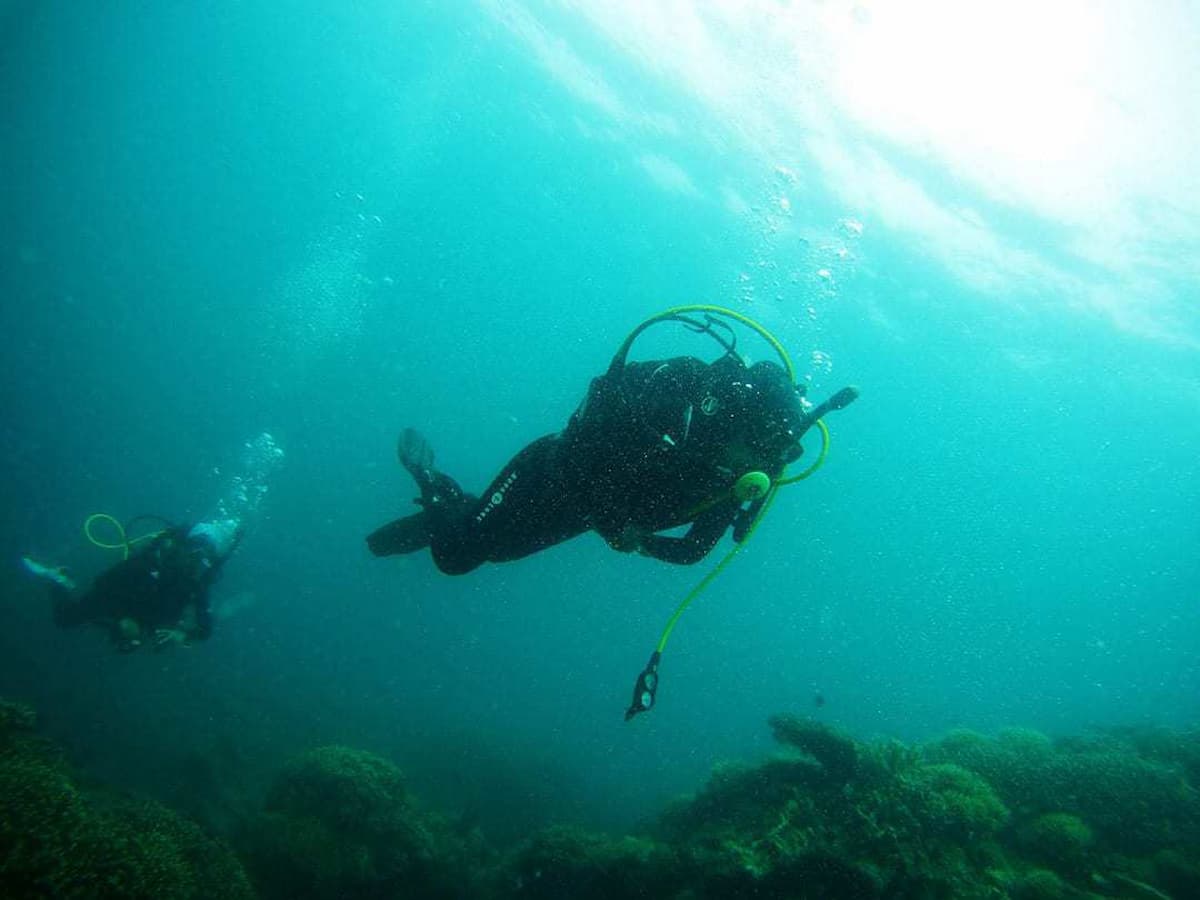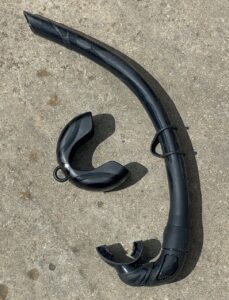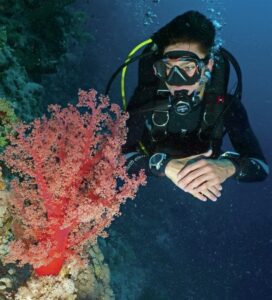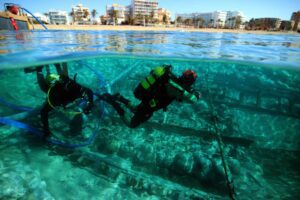Q: I’m using these shoddy economic times and my recent redundancy as a good excuse to live out one of my dreams and travel through southeast Asia. My golden handshake was more a passionate bearhug (with tongues), so I’m lucky enough to be going on the road for the next year or so. I want to dive but am going to be taking anti-malarials while out there. You probably get asked this a lot, but what are the pros and cons of each anti-malarial and which is best from a diving point of view?
A: You’re right, I do get asked this a lot. Which stands to reason, as mosquitoes seem to enjoy most of the spots that divers do. Female mozzers of the Anopheles genus are the blighters that transmit malarial parasites, which hang out in their salivary glands. Mosquitoes actually feed mainly on nectar, but the female has to indulge in a ‘blood meal’ to get the necessary proteins for egg development. After biting, the mosquito pumps in saliva to inhibit blood clotting, and thus squirts malaria directly into the victim’s bloodstream. Yuk. So before we get onto medication, the most-important thing to say is don’t get bitten. Smother yourself in DEET and citronella, wear long-sleeves and trousers (smothered with DEET and citronella), burn coils and sleep under a net. As for prophylaxis, the world is now largely chloroquine-resistant; so the options are threefold. Resistance patterns vary so which one you pick will depend on the exact countries you’re visiting. Mefloquine (Lariam) is effective but resistance is developing in areas of southeast Asia and it can cause vivid and kooky dreams (some view this as a bonus, but if you do get lurid nightmares, it’s best to steer clear of it if you’re diving). Doxycycline is good and cheap but has the potential to exaggerate sunburn and lead to yeast infections down below. Malarone is good and has few side-effects, but is expensive. Whichever one you decide on, start it well before you depart so if any side effects do occur, you have time to switch to another.
Q: I have a friend (no really, it's not me!) who is booked on a dive trip to Malta in the summer. She has always enjoyed more than a few drinks, but recently she has decided that she needs to go to a detox clinic. This has come as a shock to all who know her, but I understand that she will likely be given drugs to assist her in not drinking alcohol, including Disulfiram (Antabuse). She is supposed to be doing her Advanced Open Water course while on holiday. I am concerned that there may be some side-effects to these drugs that might preclude her from diving. Could you tell me if the taking of Antabuse would be a cause of concern? I'm hoping it is a far-better situation than the heavy drinking she was indulging in!
A: C2H5OH. Looks innocuous enough, but these few letters and numbers represent alcohol, a psycho-active drug that’s been in (ab)use for thousands of years. Paradoxically, in that time alcohol has been accepted both as popular social lubricant while simultaneously fuelling the dark underbelly of social malcontent. Despite the initial surge of good humour, sociability and removal of inhibitions, alcohol quickly becomes a potent central nervous system depressant which dulls co-ordination, impairs reasoning, damages memory and disrupts sleep. And when abused over a long period, the complications are numerous: liver cirrhosis, gastrointestinal bleeding, pancreatitis, cardiomyopathy, trauma, mental health disorders, and a wide variety of cancers. Anything this destructive discovered now would be instantly made illegal.
Disulfiram (Antabuse) is a drug that’s been around since the 1920s, which inhibits the enzyme that breaks down alcohol. Thus anyone taking Antabuse becomes acutely sensitive to the effects of even small amounts of alcohol; immediate symptoms of a hangover will follow, including flushing, throbbing headache, nausea, copious vomiting, sweating, thirst, chest pain, palpitations, hyperventilation, vertigo, blurred vision, confusion, and so on… It is also known to potentiate the effects of, and susceptibility to, oxygen toxicity.
So my advice is to steer well clear of diving while your friend is undergoing detoxification, as all of the above symptoms might occur during the ‘drying out’ phase, and would certainly be very difficult to manage when underwater – not to mention the danger this would put both your friend and her buddy in.
Q: I’ve heard about a magical new substance that can supply enough oxygen to enable us to breathe underwater without tanks. Is this pure science fiction or does it have some basis in science fact? I remember seeing something of this sort in the 1980’s film The Abyss, but I don’t know whether this new discovery relates to this or not… Any enlightenment, Doc?
A: The substance you mention that featured in The Abyss was a perfluorocarbon (PFC) emulsion, which initially held much promise to act as an artificial oxygen carrier. PFCs are colourless synthetic liquids, containing mostly carbon and fluorine molecules, into which can be dissolved significant quantities of gases such as oxygen and carbon dioxide – enough to support life with fluid-filled lungs. In effect, they can behave as ‘blood substitutes’, bypassing the need for blood products; and hence interest in their myriad potential uses has been huge. Experiments on mice (including one carried out ‘for real’ in the aforementioned film) demonstrated the proof of concept, some surviving for an hour while completely immersed. However, gas exchange in a liquid medium is somewhat reduced, and the increase in work of breathing too much for human trials to be attempted. Hence the ‘liquid breathing’ goal has been all but abandoned.
All may not be lost though, as there is ongoing research into whether PFC emulsions might be effective as an adjunctive therapy for DCI. As they take up nitrogen exceptionally well, there could be a role for PFC emulsions as a first-line intravenous treatment, particularly when access to recompression is difficult or likely to be delayed. In theory, combined administration with oxygen would have many beneficial effects – increasing oxygen delivery (as it dissolves well into the emulsion), accelerating the removal of nitrogen (for the same reason), and acting as a surfactant to reduce bubble size (and hence reduce blood vessel blockage and ischaemia).
The other substance you might have come across recently is a crystalline material discovered in Denmark, that can bind and store oxygen in high concentrations. The stored oxygen can be released again when and where it is needed, by subjecting the material to hear or low oxygen pressures. A bucket full (ten litres) of the material is enough to suck up all the oxygen in a room. The key component of the new material is the element cobalt, which is bound in a specially designed organic molecule. The lead researcher has claimed that ‘divers may one day be able to leave the oxygen tanks at home and instead get oxygen from this material as it ‘filters’ and concentrates oxygen from surrounding air or water. A few grains contain enough oxygen for one breath, and as the material can absorb oxygen from the water around the diver and supply the diver with it, the diver will not need to bring more than these few grains’.
This sounds more like science fiction than science fact, agreed, but history is littered with examples of one becoming the other. So watch this space for further developments (and hopefully for news of The Abyss 2)…
Also do read if you Can scuba dive with a false front tooth?








